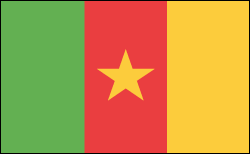Cameroon History


Cameroon Becomes an Independent Republic
France set up Cameroon as an autonomous state in 1957, and the next year its legislative assembly voted for independence by 1960. In 1959 a fully autonomous government of Cameroon was formed under Ahmadou Ahidjo. Cameroon became an independent republic on Jan. 1, 1960. In 1961 the southern part of the British territory joined the new Federal Republic of Cameroon and the northern section voted for unification with Nigeria. The president of Cameroon since independence, Ahmadou Ahidjo was replaced in 1982 by the prime minister, Paul Biya. Both administrations have been authoritarian.
With the expansion of oil, timber, and coffee exports, the economy has continued to improve, although corruption is prevalent, and environmental degradation remains a concern. In June 2000 the World Bank agreed to provide more than $200 million to build a $3.7 billion pipeline connecting the oil fields in neighboring Chad with the Cameroon coast. In Aug. 2006 Nigeria turned over the disputed oil-rich Bakassi peninsula to Cameroon—Nigeria had been resisting the World Court ruling since 2002.







